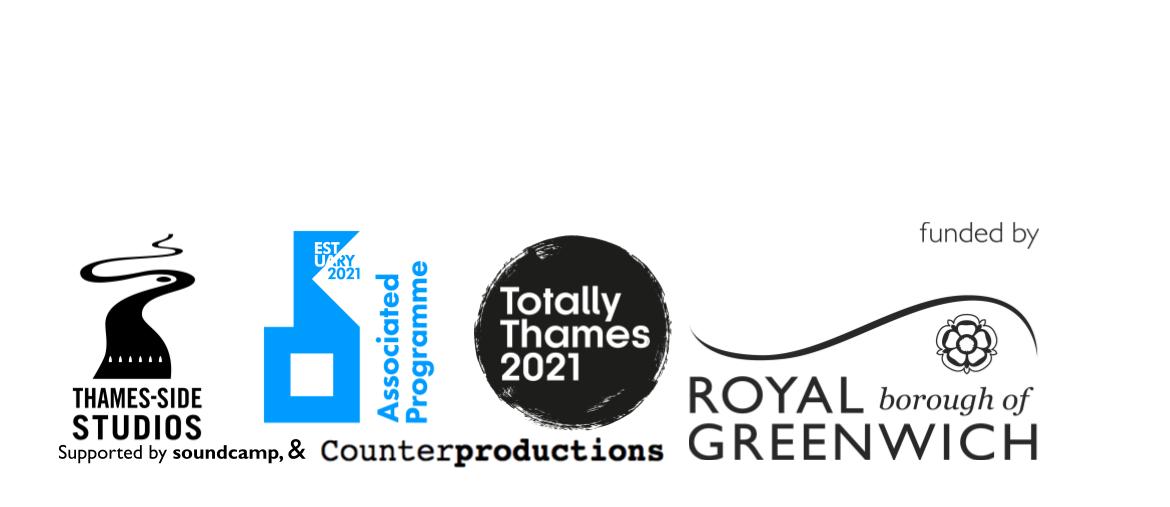
- This event has passed.
Hydrodetour: Fluid crossings and stratigraphy – Geodiversity & Art Walk
26th September 2021 @ 10:30 am - 5:00 pm
£6
Hydrodetour: Fluid crossings and stratigraphy – Geodiversity & Art Walk
led by Artist Gail Dickerson and Geologist Diana Clements.
26 September 2021
Crossing paths of art and geology as we walk – Hydrodetouring deep histories on our journey from Abbey Wood towards the Thames at Woolwich we will explore the colours, textures and forms deposited by floods, glaciers, rivers and seas that once covered the land on our walk from Abbey Wood to the Thames Barrier. From abbeys to fossils, discussions on chalk and glaciers, we wind our way along the Thames passed natural sculptures and former quarries, to marvel at earth colours and exposed layers of London’s strata, an amazing variation laid down millions of years ago.
START Abbey Wood Station
The Walk will last approximately 6 hours and toilet stops are very limited.
Be aware that there are many ups and downs along the 7 miles (11 kilometres) and that there will be roads to cross, some of them busy.
In the woods the ground may be slippery and uneven although mostly we will be on well-trodden paths and pavements.
Stop 1 View Point at Abbey Wood
Overview of London geology
Flooding in the area
Thames Tideway
Stop 2 Fossil Enclosure
Ancient environment of Abbey Wood c. 55 million years ago
What fossils can be found?
Stop 3 Chalky Dell
Ancient environment of Abbey Wood c. 85 million years ago
Nature of Chalk
Stop 4 Conduit Pond
The importance of springs in the area
Why here?
Stop 5 Bostall Wood
Why is there such a steep valley?
Stop 6 Old Quarries, Mines and Brickworks
More recent history of brickmaking in the area
How this spot is influenced by the geology
Stop 7 The Slade
Effects of the Ice Ages on London
LUNCH STOP Old Mill Road (Old Mill Inn & snack-bars)
Stop 8 Dog Rocks
Art, Natural or Anthropogenic?
Stop 9 Ha-Ha and Shooters Hill
Shooters Hill, the highest spot in South London
What is it formed of and why does it stand alone?
Stop 10 Charlton Cemetery wall, Charlton Park Lane
The processes and results of brickmaking
Stop 11 Gilbert’s Pit
The rocks and the pigments obtained
Comparison of the area 55 million years ago to the area in the present day
Stop 12 Thames Barrier
Why was it built, and why here?
What of the future?
Crossing paths of art and geology as we walk – Hydrodetouring deep histories on our journey from Abbey Wood towards the Thames at Woolwich – artist Gail Dickerson Here and Geologist Diana Clements, from the London Geodiversity Partnership Here, explore the colours, textures and forms deposited by floods, glaciers, rivers and seas that once covered the land on our walk from Abbey Wood to the Thames Barrier. From abbeys to fossils, discussions on chalk and glaciers, we wind our way along the Thames passed natural sculptures and former quarries, to marvel at earth colours and exposed layers of London’s strata, an amazing variation laid down millions of years ago.

This walk with Artist Gail Dickerson and Geologist Diana Clements, both from London Geodiversity Partnership provide a wonderful overview of watery commons and an exploration of fluid geological structures on which the city floats.
Starting from Abbey Wood station, winding through green spaces to Lesnes Abbey, to view point to explore the fossil pit for early mammals, discuss the chalk at Bostall Wood; then talk about the glaciers at the Slade, see the Dog Rock natural sculptures on Plumstead Common, view the exposed layers of London’s strata at the former quarry Gilberts Pit in Charlton, and then head down to the Thames Barrier at Woolwich.
Walk approx. 6 hours + Distance: 7 miles +
Start from: Abbey Wood Station exit 10:30 am – Abbey Wood, Londres SE2 9PY
Lunch Bring a pack lunch
End: by Thames Barrier 16.30 pm or continue to Thameside Studios Gallery to see the Hydracity exhibition with final performance lantern walk starting 6.0 pm
Part of Totally Thames 2021 and Hydracity (Support of Thames-Side Studios Gallery):
Hydracity invites you to observe and re-imagine London and its hinterland in new ways; to re-experience this fluid, shifting untameable environment. What is it that circulates beneath our feet oozing from the muddy Thames? In Hydracity we create a unique labyrinth map that interacts with other works & 8 hydrodetours. This ever-changing environment of watery commons, reflects back something of the hydra-like city, its ability to rejuvenate, offering overlapping narratives for a complex ecosystem.


